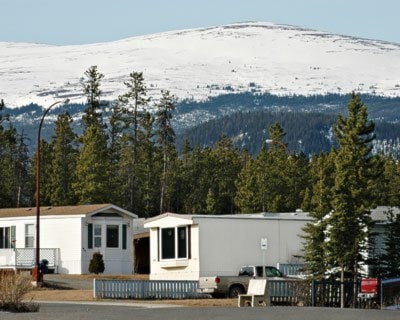The new Arkell development could become Whitehorse’s first efficient, low-energy housing neighbourhood.
Narrower streets, preservation of existing tree cover, orienting home windows to take advantage of passive-solar heating and the possibility of geothermal power are all possible components of the “alternative building standards” developers hope to work into the project.
“It’s not rocket science,” said Ian Robertson, owner and chief developer of Inukshuk Planning, which is overseeing the project.
The project’s alternative development concepts aren’t “anything out of the ordinary,” he added.
Rocket science or not, these new concepts represent a new direction for Yukon construction.
“People in the North tend to be fairly conservative in what they build… the basic building principles haven’t changed for years,” said Robertson.
Arkell’s new development is a project for our times.
“Construction costs are out of control in Western Canada… people are now saying ‘OK, we have to do this more efficiently,’” said Robertson.
To date, only a few Yukon buildings have adopted certain elements of energy-saving design, said Robertson, noting the Gold Rush Inn’s solar panels (installed in the early ‘90s) as well as a new administration building for Mayo’s Nacho Nyak Dun First Nation, which utilizes geothermal heating.
“We are looking at potential benefits to ensure that these changes continue,” said Mike Gau, Whitehorse’s manager of planning and development services.
While the city can’t provide direct financial support, design and density requirements could encourage more efficient developments in future, said Gau.
Planners also hope the Arkell development will bolster the affordable housing market, which “hasn’t been addressed for some years.”
“There’s a disconnect (in Whitehorse) between what you can afford and what’s available,” said Robertson.
The development would consist of five different housing types, providing “a range of options to suit (Whitehorse’s) aging demographic. The houses smaller lot size is also likely to “achieve affordable housing for young families.”
The new neighbourhood’s layout is also meant to provide “more character.”
For starters, the development is not “car priority,” said Gau.
“Your street isn’t littered with cars. Instead it’s trees and sidewalks and people,” said Gau. “You actually get to appreciate the architecture of the buildings versus seeing only a box for your car.”
The development will also feature reduced front yard setbacks, which Robertson said will promote a “closer relationship with a more pedestrian-friendly street.”
Efficient building practices will initially be more expensive, said Gau, but with the increasing price of oil, these “additional costs could be paid back within three to 10 years.”
“It’s a bit of an experiment now,” said Robertson, adding the new development is a “baby step” towards finding construction solutions for a changing housing environment.
